 Contact us
Contact usIntent
Community
Studio Organo Concepts
About Us
Subsidaries
Studio Organo
TS RERA No.P02400003403.
TS RERA No.P02400003403.
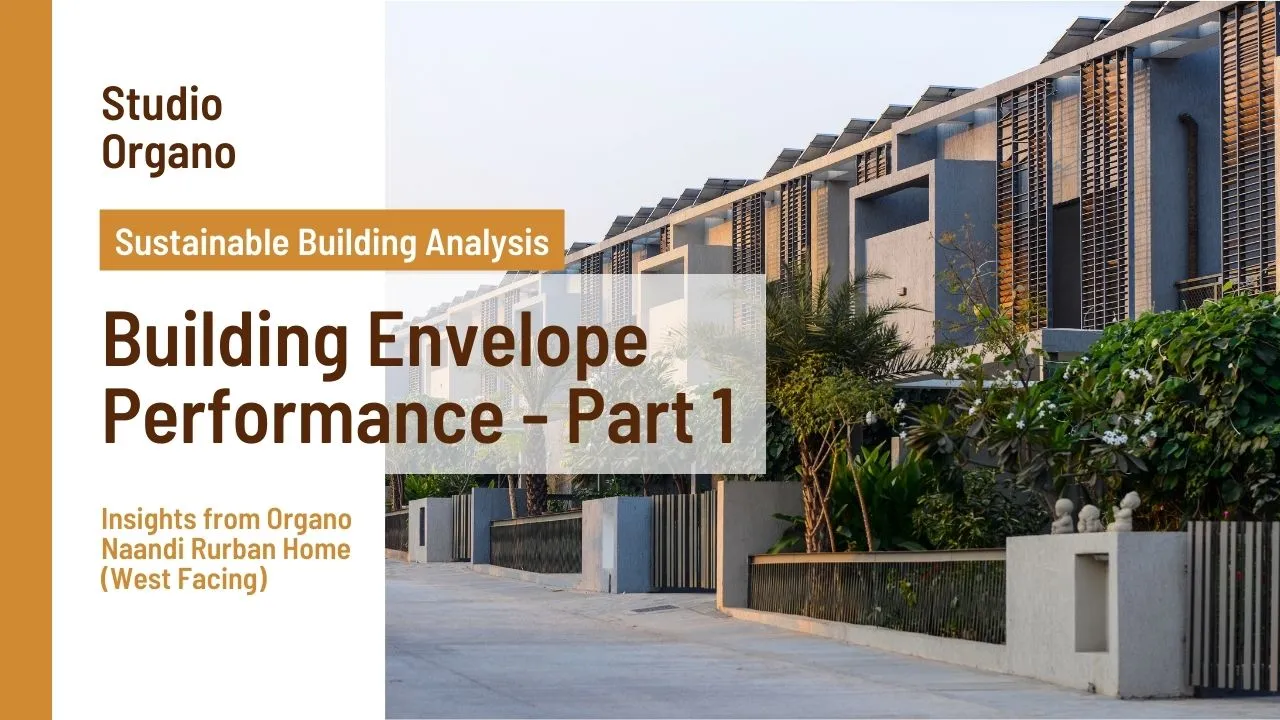
Insights from Organo Naandi Rurban Home (West Facing)
Author : Prajwala Gaddalay, Assistant Manager (Sustainability)
Co-Author : Author: Meena Murugappan, Director (Product Strategy & Innovation)
As architects and developers, our responsibility extends beyond project completion. While we focus on balancing customer success, aesthetic appeal, sustainability, and functionality, we must also consider the long-term performance of our buildings. Understanding how buildings perform over time is crucial for their impact on the environment and climate change.
At Organo, we are keen to explore this aspect further. Rakesh Koti, Head of Sustainability, and I revisited the Earth Air Tunnel at Organo Naandi, constructed in 2019. Five years post-completion, with the landscape now mature, we measured the temperature drop during peak summer in Hyderabad. You can read more about our Earth Air Tunnel Systems [here](https://organorurban.wordpress.com/2015/04/02/tunnel-draft-a-cooling-system/). We found a significant temperature drop of 6 degrees from an ambient temperature of 39 degrees, which delighted the residents.
Previous studies showed similar results, with temperature drops ranging from 6 to 8 degrees (and sometimes 10-12 degrees in north-facing homes). A detailed cost-benefit analysis, however, suggested that there might be more economical and effective alternatives to the Earth Air Tunnel system. More details on this can be found [here](https://www.organo.co.in/blog/lesson-from-sapthapatha-part-1-air).
During our temperature and comfort analysis, we used Infrared (IR) systems to measure the thermal performance of the building envelope, which includes the walls, windows, roof, and floor.
Our evaluation, conducted on May 17, 2024, at 3:30 PM, recorded the highest temperature at 39 degrees Celsius. The house has a west-facing entrance, with windows on the east and west sides and bedrooms on the south side. Initially, we thought the southern wall would receive the most sunlight. However, the IR camera readings showed that the west window on the first floor had higher temperatures than the east window. Additionally, the west window displayed temperature variations within its frame, indicating shaded areas. Surprisingly, the southern wall was not significantly affected by the high heat.
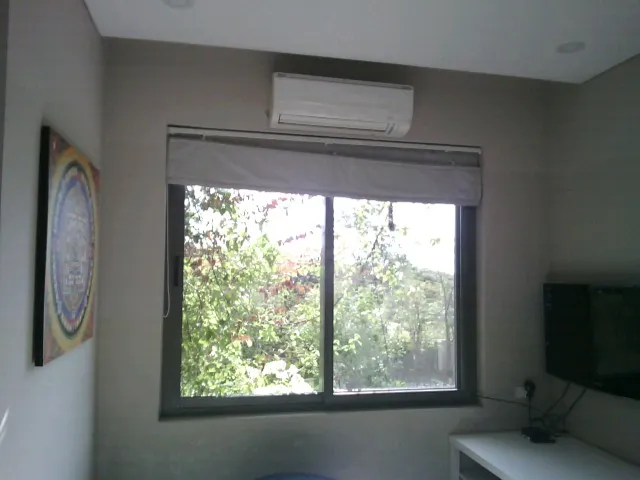
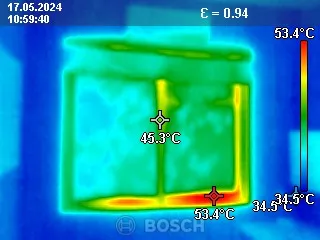

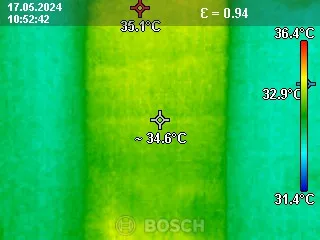
To further investigate, we conducted a study using FormIt software to map radiation on a block model. The results revealed that the southern wall receives maximum radiation from July to December, a period with relatively lower daily temperatures compared to summer months. This means the south wall is more affected during the cooler part of the year. During summer, the west wall and roof experienced the highest impact from increased sunlight. These insights highlight the importance of strategically designing different building surfaces to enhance thermal comfort and energy efficiency throughout the year.

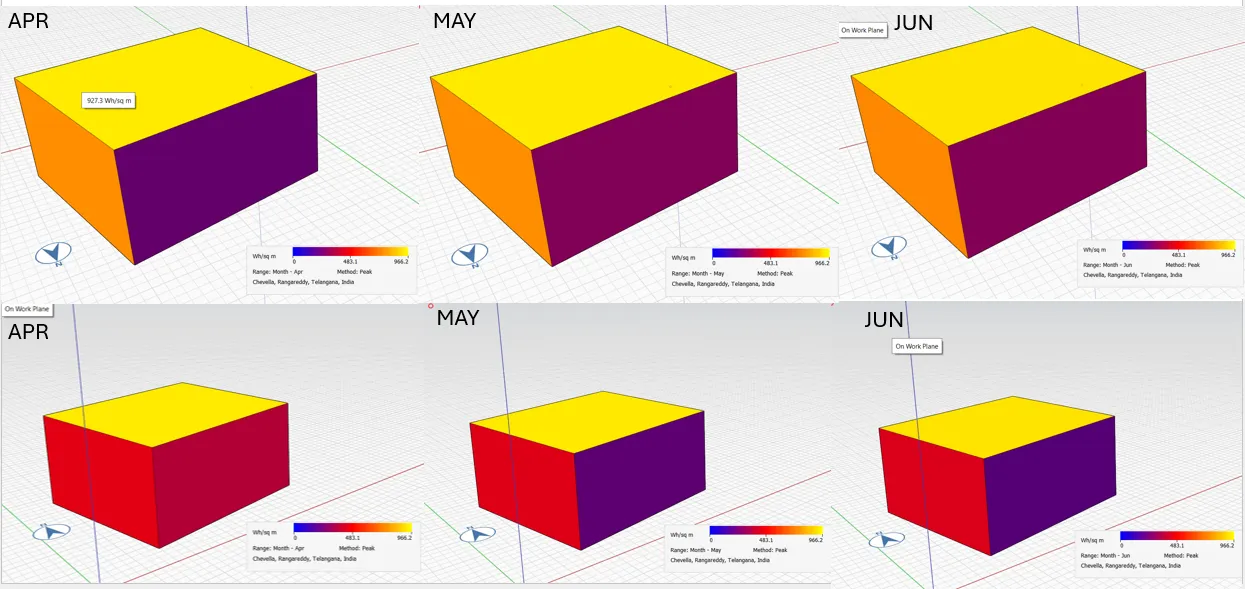
Here the southern Wall and western wall have higher temperatures.
Here the southern wall is relatively low compared to the western wall. The roof takes the maximum impact during the peak summer months as the sun is at its highest angle.

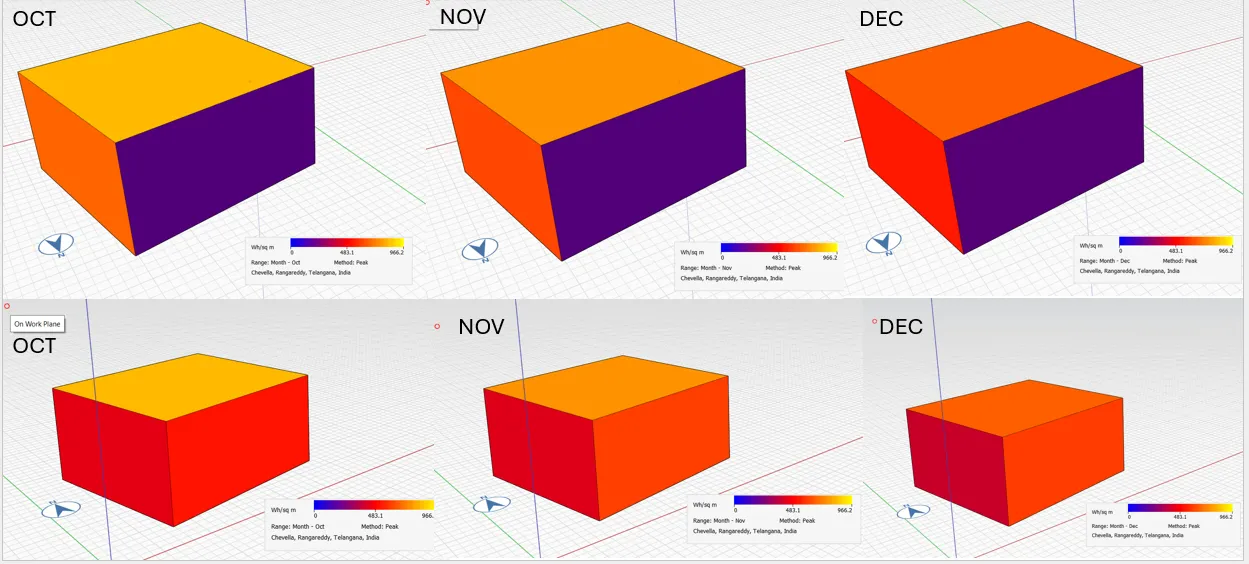
.
The southern wall radiation keeps getting higher by the month.
The roof gets lower radiation during these months as the sun is at a lower angle.
These observations are helping us refine design strategies for upcoming projects in Organo Ibrahimpalle, Organo Aloor, and Organo Depalli. By integrating real-time and computational studies, we can select climate-appropriate materials, determine where insulation is needed, and make thoughtful use of vegetation around buildings. Combining these approaches allows us to create more sustainable and energy-efficient designs tailored to each location's unique environmental conditions.
Understanding the long-term performance of our designs is essential for creating sustainable and energy-efficient buildings. At Organo, we are committed to continually improving our strategies to meet these goals.
We are a cross-functional and research-focused team of architects, engineers, and technical experts, who ideate, refine and detail eco habitat products, components, and solutions. Our core intent is to co-create and manifest apt rurban lifestyles across all eco-habitat components to celebrate the living for respective user groups. From earth-friendly neighborhoods to home interiors, we’ve got it all covered.
Instagram: https://www.instagram.com/studioorgano/
Website: https://www.organo.co.in/studio-organo
If you’d like to know about our design explorations or if you would like to be part of our user research as we refine the design, please email us at studio@organo.co.in